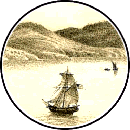Conversano
History Of very ancient origins, testified by the remains of the megalithic walls, Conversano is quoted in documents belonging to the 4th- 3 th century B.C. with the name of Norba. Rich in archaeological finds, also thanks to its propitious geographical position, Norba was part of the Roman Empire and underwent its influence until its consequent decline because of Barbarian invasions.In the Middle Ages it was refounded under the name of Cupersanum passing from the Byzantine Empire to the Lombards of Benevento ( 7th century). Thanks to the Norman invasion, around the11th century, and to Count Goffredo d’Altavilla, Conversano became the centre of the county which stretches from Castella to Polignano a Mare, Brindisi and Lecce. |
The town Conversano, with its archaeological heritage, is one of the greatest and oldest centres created by the Peuceti. The old megalithic walls, still visible in some tracts, symbolize the origins and historical importance of a vital and dynamic town, enriched in time with artistic and monumental beauties. The town is full of churches, noble houses and monuments of high artistic value. The social life in Conversano develops around the Castle of the Counts Acquaviva of Aragon, symbol of the feudal power of the Counts. Nearby is the Romanesque Basilica Cathedral which symbolizes not only the spiritual power of the Church but the bishop’s residence as well. |
Further on there is the Monastery of San Benedetto which now houses the civic museum. Other monuments that contribute to the beauty of the historic centre are: the church of SS Cosma and Damiano, the church of the Madonna del Carmine, Marchione Castle (hunting lodge of the Acquaviva Aragons). You can find art everywhere in Conversano: in nature, in “ponds” (small lakes) where man has built limestone tanks for storing water so precious for the countryside. Among the olive groves and the cherry trees you find old places of noble and rural /peasant tradition and the remains of a past not yet swept away. |
Events
|

